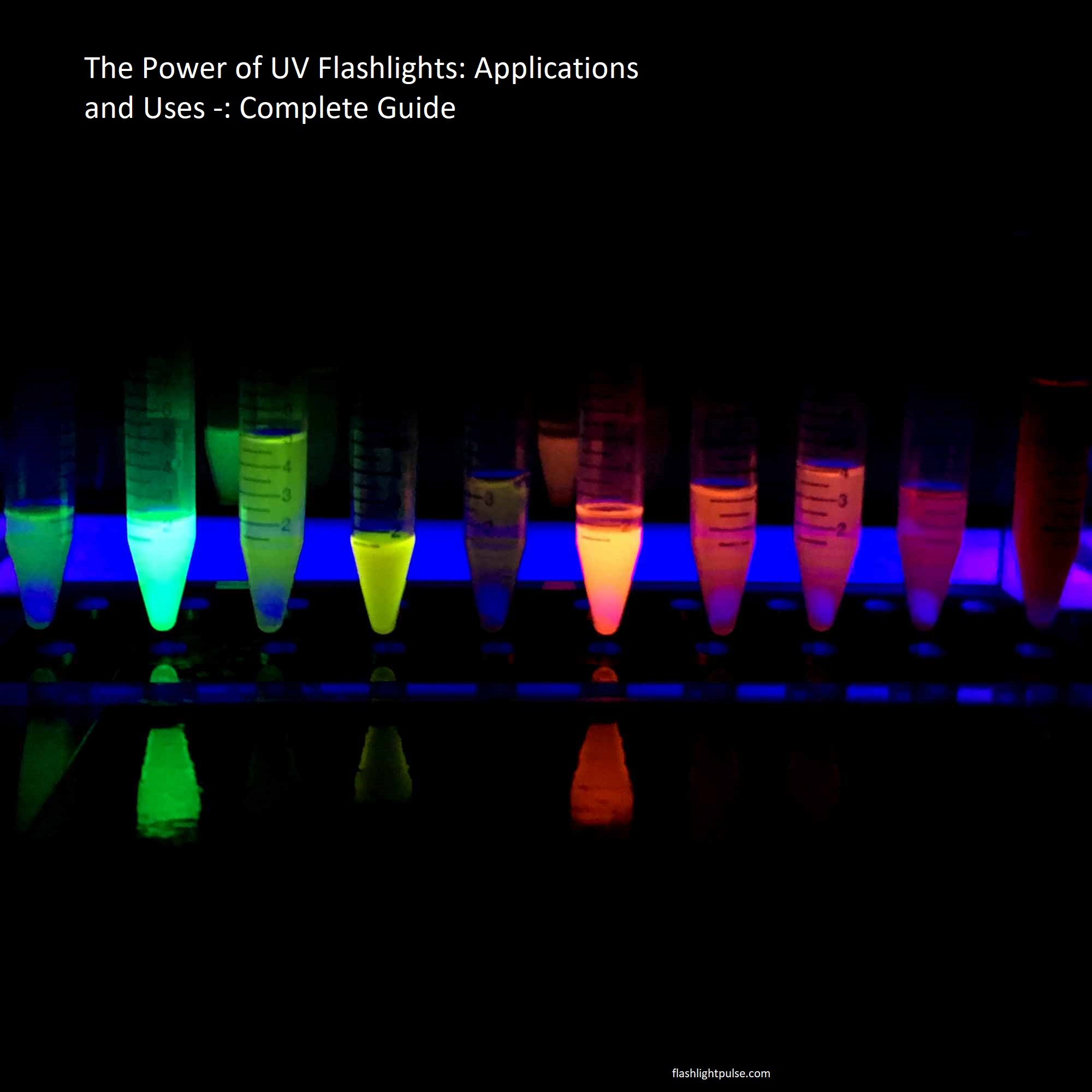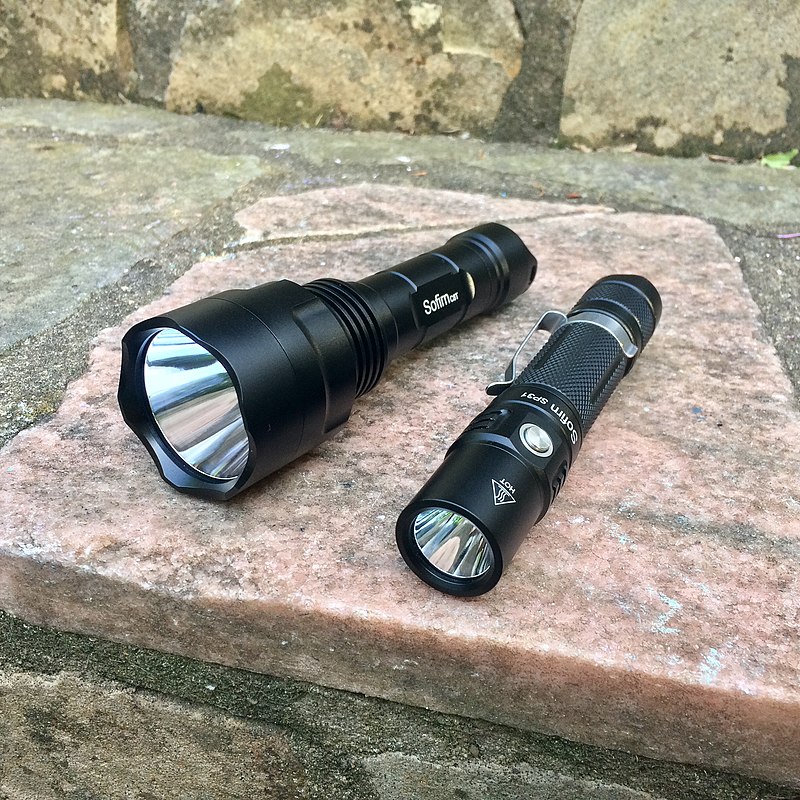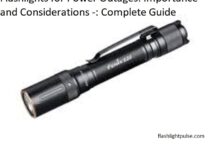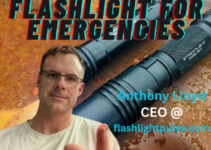Are you wondering about the power of UV flashlights and their various applications? In this comprehensive guide, you’ll learn everything from locating pet stains to identifying counterfeit currency and much more. Additionally, discover the potential safety risks associated with this powerful tool.
Get ready to unlock the power of UV flashlights!
Welcome to the definitive guide on ultraviolet (UV) flashlights and their applications. In this guide, we’ll take a look at how UV light can be used to identify minerals, brighten white clothing and shoes, detect fraudulent currency and documents, verify authenticity of materials and even to detect certain bacteria and other living organisms.
We’ll explore the pros and cons of using UV lights in different applications, as well as some tips for getting the most out of your flashlight. We’ll also discuss different types of UV flashlights, such as LED vs standard quartz bulb models, so you’re sure to find the perfect tool for your needs. So let’s get started on discovering the power of UV flashlights!
Primarily used by scientists have discovered multiple applications for ultraviolet light over the years:

Explanation of what UV flashlights are and their purpose
UV flashlights are powered lighting devices that emit ultra-violet (UV) light in the wavelength of about 400 nanometers. Typically, a UV flashlight will either take single AA or AAA batteries and use a LED as the power source. The UV light emitted from these devices is used for various applications ranging from outdoor exploration, practical uses indoors, to more specialized applications like forensic investigations, industrial leak detection and more.
The most common type of UV light wavelength seen in handheld devices is the 395-405 nanometer range that produces a bright blue-violet color when viewed. This relatively small frequency range is enough to cause specific materials to react in interesting ways which makes them useful for both recreational activities as well as professional purposes.
In recreational use, UV flashlights can be used for exploring mineralogy and geology, as well as finding minerals at night or even exciting summer activities such as blacklight parties. For industrial use, they are equipped with special filters that allow only part of the spectrum through giving them the capability of detecting additives in plastics also known as fluorescent leaking detection (FLD). Other commercial/industrial uses include authenticating high values documents such banker notes and stamps due to fluorescent security features embedded on them that are only triggered under specific wavelengths of UV light.
It is also used by professionals in forensic investigations – typically by law enforcement officers or detectives – based on their capability of making otherwise invisible substances visible upon exposure under UV light; it’s thus an invaluable tool for recovering evidence at crime scenes or whilst investigating suspicious activity.
Brief overview of the content of the guide

This comprehensive guide is designed to provide an in-depth look at ultraviolet flashlights and their many applications. It begins by introducing you to the science behind UV light, detailing wavelengths and spectrum, before moving on to discuss practical applications such as using UV flashlights for forensic investigations or checking authenticity of currency and documents.
In addition, you will find useful information ranging from how to read the labels of UV lights, safety precautions for UV light usage and how to get the most out of your flashlight. Whether you’re looking for ways to make use of your new UV flashlight or searching for a primer on all things ultraviolet, this guide provides a wealth of knowledge about this versatile technology.
Understanding UV Light
Ultraviolet (UV) light falls on the energy spectrum between visible light and X-rays. Its wavelength is shorter than visible light, making it invisible to the naked eye. UV lamps provide an effective means of producing and amplifying short-wavelength radiation that enables non-visible detection and analysis.
UV lamps come in different varieties based on their specific applications. Ultraviolet solar radiation can be divided into three categories:
UVA: This range of UV radiation is sometimes referred to as “blacklight” and has a wavelength range of 315nm to 400nm. It is generally used for non-destructive inspection processes, such as detecting cracks or corrosion in parts or components and fluorescence studies, among other applications.
UVB: This type of ultraviolet has a wavelength range of 280nm to 315nm and finds application primarily in medical research processes, such as phototherapy treatments for skin conditions like psoriasis.
UVC: This range poses more danger than the others, because it has a shorter wavelength (200nm to 280nm). As such, its reach is much more limited than UVA or UVB light due to its inability to penetrate Earth’s atmosphere in sufficient quantity from natural sources like the Sun. When these rays are artificially produced by man-made equipment it must be done cautiously as overexposure can cause damage to human eyes or tissues. It finds application most importantly in sterilization practices due its destructive abilities against bacteria, viruses, molds and fungi –- making it highly effective for laboratory use.
Explanation of the properties of UV light and how it differs from visible light
Ultraviolet (UV) light is a type of electromagnetic radiation that falls between visible light and X-rays. It has slightly more energy than visible light and a much shorter wavelength. UV light is divided into three categories: UVA (315-400 nanometers), UVB (280-315 nm) and UVC (100-280 nm). UVC is the most dangerous form of ultraviolet radiation because it can cause the most damage to eyes and skin. In comparison to visible light, it has a higher frequency, enabling it to penetrate through materials more easily.
UVA waves are relatively harmless as they do not deep penetrate the skin nor do they cause sunburn or significant skin damage; however, it can still cause hyperpigmentation and long-term sun damage to the epidermal layer of the skin. UVB radiation on the other hand is associated with increased risk of skin cancer as they deeply penetrate into the basal layer of skin where they can directly affect DNA cells.
UV flashlights work by emitting short waves of UV energy in order to allow us to see things that are normally hidden in darkness or otherwise invisible in daylight. While humans cannot detect the presence of UVA or UVC rays with their eyes, a flashlight utilizing this technology helps emit an intense, focused beam that can be used for specialized purposes.
These flashlights are often used by forensic professionals for crime scene investigation as well as by professional cleaners when looking for mold growth in buildings such as hotels, hospitals, etc., scientists studying minerals and rocks and doctors looking for bacteria present on human bodies. Common applications also include pet urine detection, scorpion hunting and counterfeit money detection using specific blacklight fluorescent agents found on genuine banknotes.
Overview of the electromagnetic spectrum and where UV light fits in

In order to understand the power of UV flashlights, it is important to have a basic understanding of the electromagnetic spectrum. The electromagnetic spectrum is a range of all known types of electromagnetic radiation, which includes waves and particles, for example gamma rays, x-rays and radio waves. All electromagnetic radiation travels in a wave-like pattern at the speed of light and can be characterized by frequency (hertz) and wavelength (nanometers).
Ultraviolet (UV) light falls in between visible light and X-rays on the electromagnetic spectrum. UV light occupies a frequency between 10^14 hertz and 8×10^14 hertz, with wavelengths that fall between 10 nanometers (nm) and 400 nm. Within this range there are three types of ultraviolet light: UV-A (longwave), UV-B (midrange), and UV-C (shortwave).
The power behind UV lights lies in their ability to emit energy within this specific ultra violet range of frequencies. While these frequencies are suitable for a variety of applications in industries such as forensics, engineering, food testing, veterinary care etc., they can also be dangerous since they lie so close to ionizing radiation levels. It is important to be aware of these safety considerations when using ultraviolet lights as part of any practical application.
Discussion of the dangers of UV light exposure
Ultraviolet (UV) light is an invisible electromagnetic radiation that has energy ranging from 10 to 400 nanometers. It falls just beyond the visible spectral range of light, but can be detected by some living organisms. Despite its usefulness for a wide variety of applications, prolonged exposure to UV light is linked to serious health risks such as skin cancer and cataracts. Therefore, individuals must take caution when using UV flashlights and other sources of UV radiation.
UV radiation can be separated into three main categories: UVA (320-400nm), UVB (290-320nm) and UVC (200-290nm). UVA rays are the longest and least dangerous type, however they are still capable of contributing to long-term skin damage. UVB rays are more potent than UVA because they are able to penetrate through the atmosphere’s ozone layer. They are generally associated with sunburns and increases in skin cancer risk with continued exposure. Lastly, UVC rays have more energy than both UVA and UVB but they do not reach Earth’s surface because they get absorbed by our atmosphere’s ozone layer.
The amount of risk associated with exposure depends on the wavelength and intensity of the radiation source as well as the period of contact with it. Shortwave ultraviolet light sources such as those emitted by most UV flashlights are dangerous if exposed for extended periods without protection as smaller particles penetrate our outer layers easier than longer waves do. The eyes accumulate 97% of direct exposure from shortwave uncollimated beams due to their sensitivity so eye protection should always be used when operating shortwave flashlights or other sources that could produce such beams. The remaining 3% accumulates on areas left exposed during direct exposure where it is absorbed into deeper layers in patches or entire surfaces which later expose surrounding areas leading to irritation or burns on those areas in severe cases.
Apart from eye protection, covering all parts of your body through which ultraviolet radiation could pass should be done whenever possible during use.
In conclusion, although beneficial for occupational activities such as currency detection or medical purposes, overexposure from UV flashlights can pose serious risks to human health that must not be ignored under any circumstance. While keeping safety measures like protective goggles and wearing appropriate clothing helps minimize chances of injury, checking batteries regularly, switching off devices when not in use and monitoring time spent exposed directly to ultraviolet radiation also help protect against danger posed by these powerful devices.
Maintenance and Care of UV Flashlights

To ensure you are getting the most out of your UV flashlight, it is important to properly maintain and care for it. Depending on the type of UV flashlight you buy, there may be additional steps to follow. In general, be sure to store your UV flashlight in a cool, dry place away from direct sunlight or sources of heat and moisture. Most important is avoiding liquid contact; never drop or submerge your UV flashlight fully in liquid as this can cause irreparable damage.
Similarly, it is important to ensure that your batteries are in good condition and not overcharged/undercharged. Before using the equipment each time, check that the ceiling vents and slot entrances are clear of dirt and debris. This will help keep the internal components from becoming clogged with unwanted materials which can ultimately lead to reduced performance or even damage. Additionally, wiping off the outside of the device periodically will help remove dust and dirt which could interfere with light output if allowed to accumulate for extended periods of time.
Finally, use caution when dealing with any exposed electrical contacts; improper cleaning can lead to electric faults which could damage your device or worse yet cause injury if correct safety precautions are not taken.
Proper care and maintenance procedures to ensure the longevity of UV flashlights
Proper care and maintenance is essential to ensure the longevity of your UV flashlight. It is recommended that you take the proper steps on a regular basis in order to maintain your flashlight and keep it in top operating condition.
To begin, you should always store your UV flashlight in a dry and protective location when not in use. Avoid exposing it to extreme temperatures, humidity or dust as this can damage the components of your light over time. Additionally, be sure to avoid dropping your flashlight or tampering with any of its components as this could cause further damage.
If your UV-light does come into contact with liquids or oils, be sure to clean them up immediately and avoid using it until completely dry. Additionally, inspect the battery area occasionally for any corrosion or build-up that may have accumulated over time. If there are any signs of corrosion, replace the batteries as soon as possible to prevent further damage occurring.
When changing batteries, use only those recommended by the manufacturer and install them correctly according to the instructions provided by the product manual — observing proper positive/negative polarity (if applicable). Additionally, never leave dead batteries in your light for extended periods as they can corrode significantly.
Finally, allow some time for cooling down if you’ve been using your flashlight for an extended period — even when swapping out batteries — as this will prevent serious damage from occurring within its components. With these tips in mind, enjoy everything that your UV flashlight has to offer!
Tips for cleaning and storing UV flashlights
UV flashlights, although they’re not as common as regular flashlights, can be used in a wide range of applications, from leisure activities to security. Proper care and storage maximizes the lifespan of your UV flashlight and helps maintain its effectiveness. To ensure that your UV flashlight is able to perform at its best for longer, here are some tips for cleaning and storing it:
Cleaning:
- Unscrew the protective dome cover regularly to remove debris and substances like oil or ink that are invisible in regular light but glow bright under ultraviolet light.
- Clean the lenses and bulbs before using them by using a piece of cloth. Make sure not to use any chemicals when cleaning.
- Replace the batteries regularly; storing them at room temperature helps keep their charge.
- Do not submerge or expose your UV flashlight to extreme temperatures or moisture; any exposure can damage the lens coatings or bulbs inside the device.
Storing:
- Keep your UV flashlight away from dust and liquids; store it in a dry place out of direct sunlight exposure when not in use.
- Do not store loose batteries with your device as this can cause an electrical short or corrosion on the contacts due to leaking battery acid.
- Securely fasten any screws or external parts so they do not come off during storage and transport; sloppy assembly can reduce light output of your UV flashlight significantly.
Conclusion
In conclusion, ultraviolet light can be used for a multitude of applications, from forensic investigations to detecting fraudulent documents and more. UV flashlights have enabled people to identify certain color patterns and observe objects that cannot be seen with the naked eye. Additionally, ultraviolet flashlights are incredibly affordable and easy to use, making them a practical tool for many tasks.
With the help of ultraviolet technology, a wide range of activities from disinfecting surfaces to photographing works of art are obtainable through just one device. Ultraviolet flashlights are a valuable asset for any amateur scientist or investigator and provide incredible results with minimal effort.
FAQs
What can UV flashlights be used for?
UV flashlights can be used for various purposes such as detecting counterfeit money, minerals, pet urine stains, forensic investigations, checking hand stamps at events, curing adhesives, and inspecting HVAC systems.
What is the power of UV lamp?
The power of a UV lamp varies depending on its intended use, but typically ranges from a few watts to several hundred watts.
What are the uses of flashlight?
Flashlights are primarily used for illuminating dark areas or providing light in emergency situations. They can also be used for signaling, self-defense, and as a tool for various professions such as law enforcement, military, and construction.
What are the uses of UV LED?
UV LEDs can be used for sterilization, curing of inks and coatings, water and air purification, insect trapping, and counterfeit detection.
What are the different types of UV flashlights?
The different types of UV flashlights include handheld, keychain, headlamp, and rechargeable models. They also vary in the type of UV light they emit, such as longwave, shortwave, or midwave UV.
Why are UV flashlights used in crime scenes?
UV flashlights are used in crime scenes to detect bodily fluids, such as blood and semen, which may not be visible to the naked eye. They can also be used to reveal hidden messages or fingerprints left by perpetrators.
What wavelength is UV flashlight?
The wavelength of a UV flashlight varies depending on its type, but typically ranges from 365 nanometers (longwave UV) to 254 nanometers (shortwave UV).
Can UV light see fingerprints?
UV light can reveal fingerprints that may not be visible under normal lighting conditions. This is because oils and residues left by the fingers fluoresce under UV light.
What color is blood under UV light?
Blood appears dark or black under UV light, as it does not fluoresce.
How long do UV flashlights last?
The lifespan of a UV flashlight depends on various factors such as the quality of the materials used, the type of battery, and the frequency of use. However, a high-quality UV flashlight can last for several years with proper care and maintenance.
See More
- Best 18650 for flashlight 2023
- Best aa flashlight 2023
- Best camping flashlight 2023
- Best edc flashlight 2023
- Best flashlight for emergencies 2023


